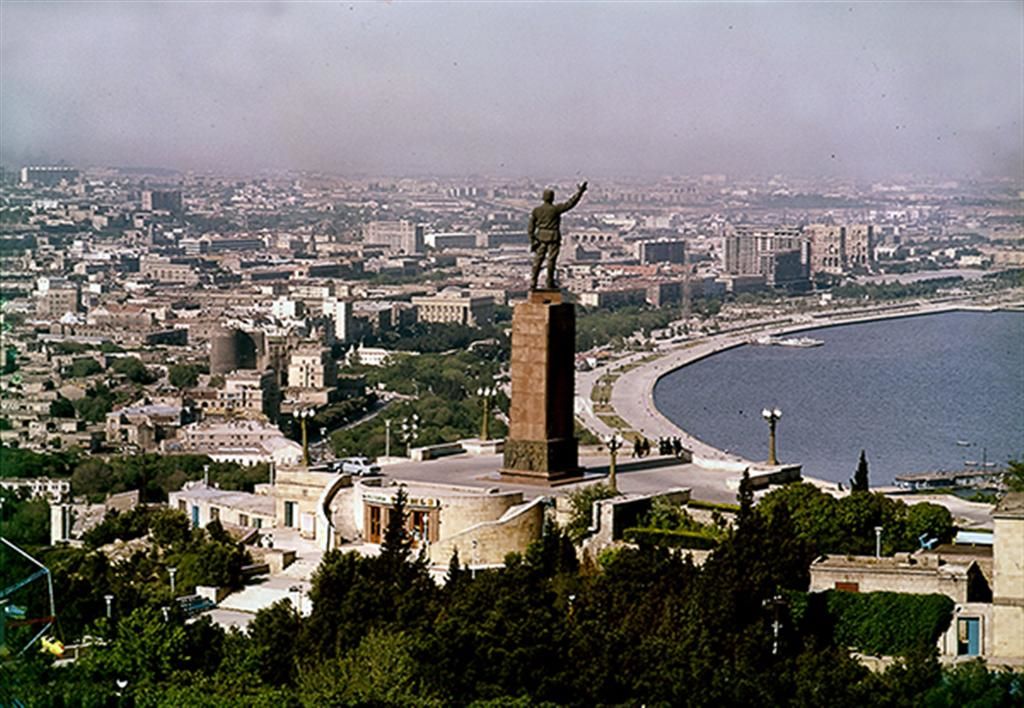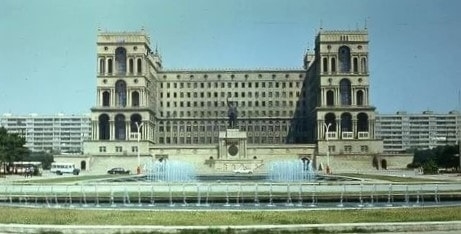Baku and the Soviet Heritage: Memory and Oblivion
The collapse of the Soviet Union launched the search for a new identity and the creation of new narratives in Azerbaijan just as in the entire ex-Soviet space. We cannot cover all aspects of the memory politics in Azerbaijan during and after the Soviet period in a single article. Instead, we highlight the most significant sites of the Soviet memory landscape of Baku and their post-Soviet transformations within the new politics of memory.
The Nagorny Park Named After Sergey Kirov

The monument to Sergey Kirov. Location: Nagorny Park, Baku, Azerbaijan. Date of the Photo: 1978. Photo Credits: Isaac Rubenchik, taken from ourbaku.com.
Immediately after the Sovietization of Azerbaijan, the urban development of Baku took a Soviet turn. In September 1920, the special committee on the development of city gardens in the Absheron peninsula created a plan on changing the appearance of the city. It included the development of the English Park in the place of the Chemberkent cemetery[1]. Later it became part of the Nagorny[2] Park.
In 1939, the Nagorny Park took the name of Sergey Kirov, a prominent political figure whose death of at the end of 1934 had made him one of the central heroes of the politics of memory of Soviet Azerbaijan[3]. Kirov’s monument was installed in the Nagorny Park as the latter dominated the panorama of Baku with a view on the bay. Kirov’s massive figure raising his hand over the city was placed at the center of a memorial that remained a prominent landmark of Baku until the collapse of the Soviet Union (Bertanitski 1971, 138-140).
The Architectural Complex Lenin Square
The design of Baku’s new central square began with the construction of the House of the Soviets (“Dom Sovietov” in Russian) or the Government House. Intended to accommodate large-scale events and serve the purpose of an ideological center, the square was the largest one in the USSR at the time of its completion (Bertanitski 1971, 146-149).

The Government House. Location: Then Lenin Sqaure, Baku, Azerbaijan. Date of the Photo: 1977-80. Photo Credits: Leonid Kondratyev, taken from pastvu.com.
The construction of the House began in 1930 and was completed in 1952. According to the architects of the House, the exterior of the building was designed in the Baroque style, using also elements of the national Azerbaijani architecture. This style was reflected in the three rows of columns located along the edges of the building, the prototype for which was the colonnade of the reception hall of the medieval Shirvanshah palace in Baku. The construction of the adjacent Lenin Square ended in the Fall of 1951. It became an ideal location for military parades and demonstrations of workers. The first large-scale event took place on November 7 of 1951 on the commemoration of the October Revolution of Bolsheviks.
The House of the Soviets itself was designed as a “memorial-building” dedicated to the “father of the revolution” Vladimir Lenin. His monument was installed in the square on November 6 of 1954. For many years, the expressive 11-meter bronze sculpture of Lenin, the leader of the proletariat, portrayed at the time of addressing the people, was the central element of the whole complex. The last Soviet demonstration in the square took place in May 1987. The mass rallies in the following years went down history as the events that contributed to the collapse of the USSR.